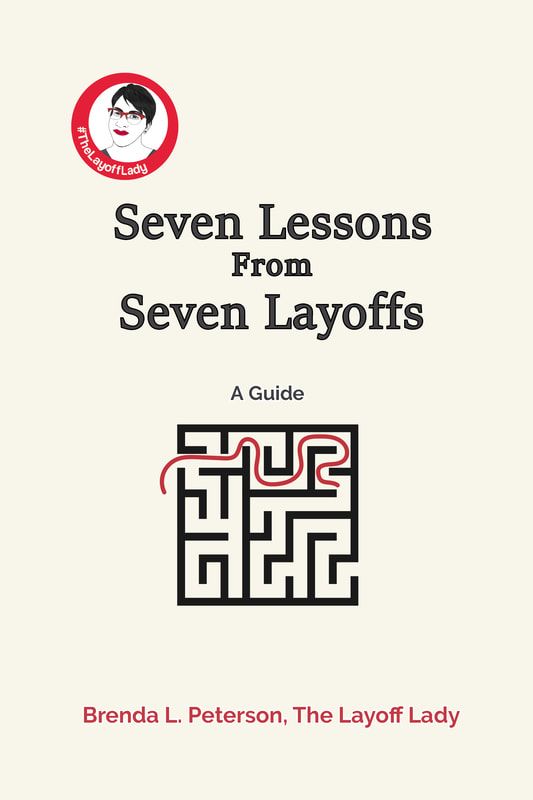|
By Brenda L. Peterson, The Layoff Lady Managing Job AnxietyRecently, I was at a professional development event where we shared best practices for delivering effective virtual training sessions. During networking time, I talked with a woman who had been laid off, and then called back to work for the same company (which is rare for someone working in the field of learning and development). While she was glad to be employed again, she was having a hard time being happy in her new/old position without constantly worrying about her job unexpectedly ending again. To Worry, or Not To Worry?When you've been laid off before, or just seen people around you lose their jobs, it's hard not to worry about it happening to you. Whenever you read about layoffs in the news, hear that your company's sales numbers were lower than expected, or hear rumors about a company merger, your mind might jump to conclusions. Instead of letting a wave of panic run through you each time your boss invites you to meet one-on-one, there is an alternative: changing your overall mindset. My Old Operating Modes: Either/OrEarlier in my career, I had two operating modes when it came to work: “I’m happy with my job” and “I need to find a new job right this minute.” When I was happy with my job, I did excellent work at my day job and didn't worry much about the future beyond that role. I would learn new skills for the job, but I didn't always think about my overall career trajectory. Conversely, when I knew I needed to launch a job search, I shifted away from the work I was doing and started focusing solely on taking my next steps outside of my current role and organization. Only then did I shift to developing skills applicable to another workplace, meeting more people to help me get a new job, and planning to exit the organization. My New Mindset: Both/AndI finally realized I didn't have to pick between these two operating modes. Instead, I needed to shift my overall way of thinking and adopt the both/and mindset that was also more long-term and sustainable. I started focusing on myself as a working professional and what I needed to do to succeed personally, regardless of who my specific employer was. This included focusing on my ongoing learning and development, building my professional network, and planning for contingencies. This built up my career resilience, which helped me feel more confident that I would thrive regardless of my current work situation. Learning and DevelopmentWhen people think of learning, they often focus on formal degrees, certifications, and completion certificates from instructor-led classes. While these are valuable, and often a great foundation, ongoing learning can take many forms. Whether you attend a webinar, watch a TedTalk, read an article online, or listen to podcasts on your area of interest, you are continuing your professional development. Staying current with industry trends and continuing to learn and grow helps me perform well in my current role while also allowing me to be future ready. In an ever-changing world, continued professional growth is the best way to manage whatever happens next. Building My Professional NetworkToo often, networking is depicted as a superficial act that involves making initial connections with people, then dreading the next day’s “Would you like to buy something from me” calls. I approach networking differently. My goal is to build mutually beneficial relationships with people. Interacting with these connections provides opportunities to share information, learn from one another, and help one another out along the way. I use LinkedIn to track my professional network. I connect with people I've met before and with whom I share something in common. My LinkedIn network includes former coworkers, individuals I've sat next to at in-person events, people I've attended an online event with, and professionals working in the same field as me. Contingency PlanningRegardless of my role, and even if it seems to be going well, I always have a backup plan, a backup backup plan, and then a couple more backup plans after those. After weathering many layoffs and the unique challenges of each, I have a broad sense of the situations I may need to mitigate. Those include an unexpected job loss, choosing an interim health care option, and how to launch a post-layoff job search. Here are a few steps I have taken to help prepare for possible situations:
What Do You Think?How do you help yourself not worry about being laid off? Share your thoughts in the comments. Learn More
0 Comments
Your comment will be posted after it is approved.
Leave a Reply. |

Just get laid off?
Click here for info on what to do first. Author7-time layoff survivor Brenda L. Peterson, The Layoff Lady, waxes poetic on layoffs, job transitions, & career resilience. Buy The Book!Were you recently laid off from your job and need a roadmap for what's next? Pick up a copy of my book, Seven Lessons From Seven Layoffs: A Guide!
Categories
All
Archives
July 2024
|




